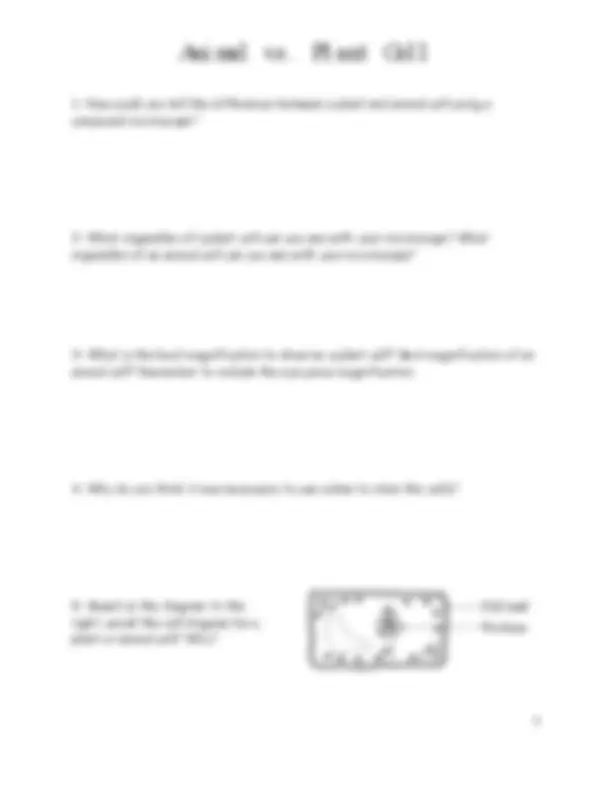




Study with the several resources on Docsity

Earn points by helping other students or get them with a premium plan


Prepare for your exams
Study with the several resources on Docsity

Earn points to download
Earn points by helping other students or get them with a premium plan
Community
Ask the community for help and clear up your study doubts
Discover the best universities in your country according to Docsity users
Free resources
Download our free guides on studying techniques, anxiety management strategies, and thesis advice from Docsity tutors
Instructions for observing and differentiating animal and plant cells under a compound microscope. Students are asked to prepare specimens by scraping cells from their cheeks and mounting them on slides, then viewing the cells at various magnifications and recording observations. A procedure for mounting specimens, instructions for viewing specimens under the microscope, and a worksheet for recording observations and drawings of the cells.
Typology: Summaries
1 / 4

This page cannot be seen from the preview
Don't miss anything!



Name _____________________ Class_________________
cells. Plant and animal cells have many organelles in common such as the cell membrane , nucleus, chromosomes , ribosome , mitochondria, and sometimes lysosomes. Plants have organelles that animals do not have such as chloroplasts and a cell wall. You would need a pretty powerful microscope to view these organelles. In this exercise, you will be asked to observe a plant and an animal cell under the microscope. Your microscope is not powerful enough to see most of the organelles in these cells. Your group will try to come up with characteristics of each cell that would enable someone to decipher the difference between these two types of cells using a relatively low magnification microscope, the compound microscope.
1 - Gently scrap the inside of your cheek with a wooden splint. You have plenty of dead epithelial (cheek) cells that will come off. 2 - Paste your cells on the center of the first glass slide. 3 - Place a drop of iodine onto the cells. 4 - Cover the cells with a cover slide and tap out the air bubbles.
1 - View each cell slide under the microscope. 2 - Start with the lowest magnification (40x), center the specimen and work up to the highest (400x) if possible. Remember your total magnification includes the objects lens times the eyepiece. Example: a 10x eyepiece and 40x objective lens equals; 10 x 40 = 400x. 3 - Record all observations.
1 - How could you tell the difference between a plant and animal cell using a compound microscope? 2 - What organelles of a plant cell can you see with your microscope? What organelles of an animal cell can you see with your microscope? 3 - What is the best magnification to observe a plant cell? Best magnification of an animal cell? Remember to include the eye piece magnification. 4 - Why do you think it was necessary to use iodine to stain the cells? 5 - Based on the diagram to the right, would the cell diagram be a plant or animal cell? Why?